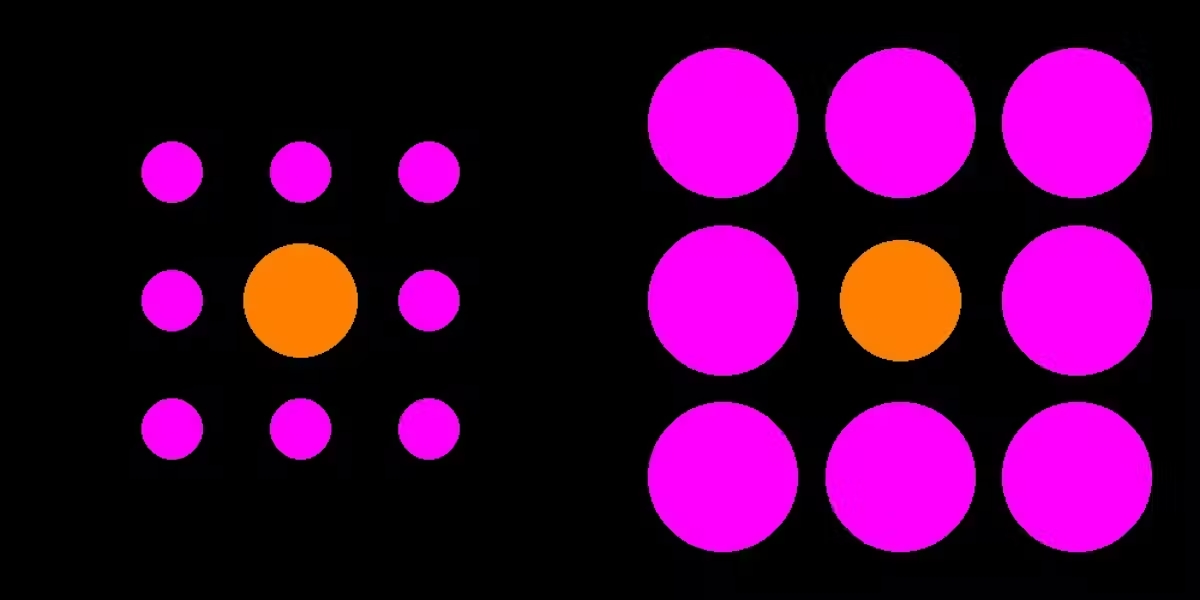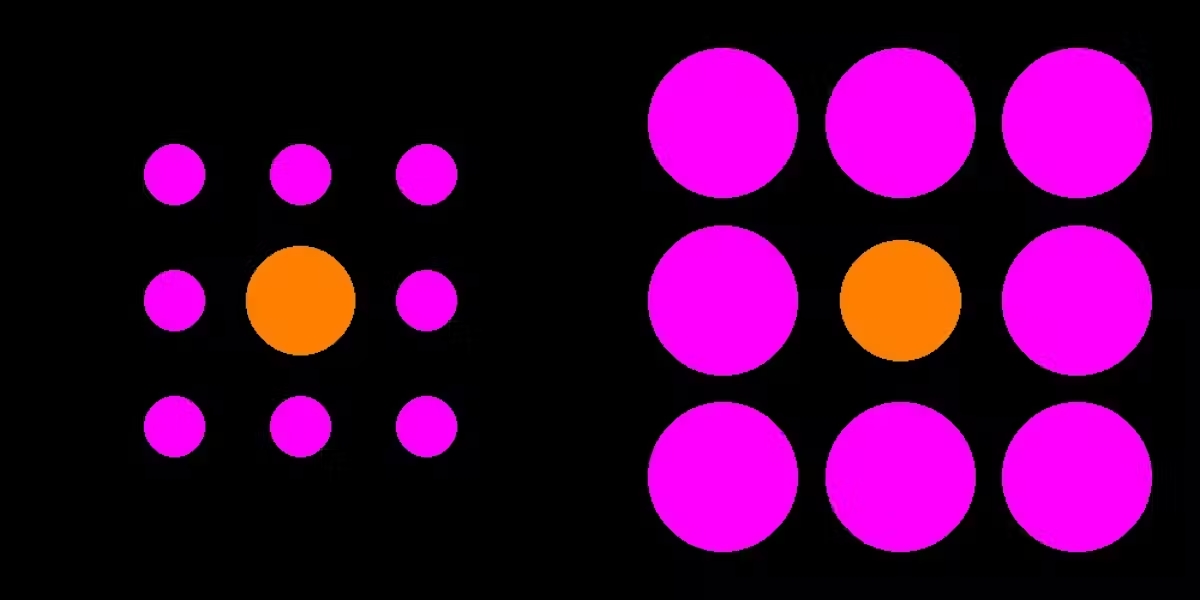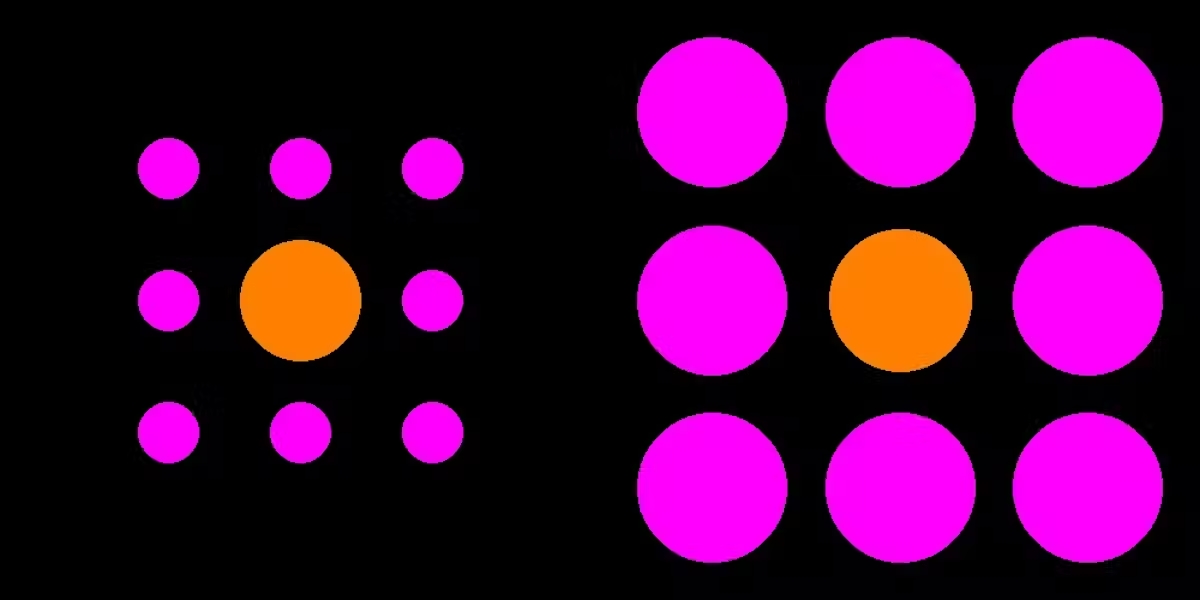
We love a good optical illusion here at Creative Bloq. From squares that hide circles to ambidextrous baseball players, little mind-benders that play with how we perceive light and colour give us no end of entertainment and can even provide inspiration for visual design. But do they fool everyone in the same way?
Scientists thought so, but they're now discovering that how much you are affected by optical illusions can depend on who you are – and what you do. And this means it could be possible to train yourself to unsee them.

The image above is one of the optical illusions that was used in the experiment. Which orange circle do you think is biggest? (Read on for the answer).
New research published in Nature by Radoslaw Wincza of the University of Central Lancashire and Martin Doherty of the University of East Anglia challenges the belief that there is nothing we can do to see or unsee an illusion.
They conducted an experiment involving 44 radiologists and over 100 psychology and medical students. Their conclusion is that the radiologists were less susceptible to optical illusions like the one above.
Most people think the orange circle on the left is larger than the one on the right, but it's actually 6% smaller.
Try again with the image below.

In this version, most non-radiologists in the experiment still believed the orange circle on the left was bigger, but most radiologists correctly identified the one on the right as larger (it's 10% bigger to be exact).
But why radiologists? The researchers chose this profession to test their theory because of radiologists' extensive training to quickly spot important information in medical scans – and to ignore the surrounding detail.
One last chance:

It wasn't until reaching this final image that most non-radiologists also saw through the visual trick and realised that the orange dot on the right is larger (18 per cent larger in this case).
The researchers note that radiologists were not completely immune to the optical illusion. Most still fell for the first version.
Of note, new radiologists still in training showed no difference from the non-radiologists, which supports the idea that the more experienced radiologists had superior perceptual accuracy as a result of their training and professional experience.
"According to current theories of expertise, this shouldn’t happen. Becoming an expert in chess, for example, makes you better at chess but not anything else. But our findings suggest that becoming an expert in medical image analysis also makes you better at seeing through some optical illusions," the researchers say.
There is more things to explore here, including whether training on optical illusions can help with certain jobs. I also wonder what other professions may have this "superior perception" that the researchers credit to radiologists.
It could be interesting to repeat the experiment with creatives. Artists and designers train and work intensely with images and can often detect differences in iterations, colour grades and minor details that other observers might not notice. I wonder if that could also manifest itself in an improved ability to see through illusions.
What do you think? If you're an artist or designer, take a look at our pick of popular optical illusions and let us know in the comments if they affect you or if you can see right through them.







